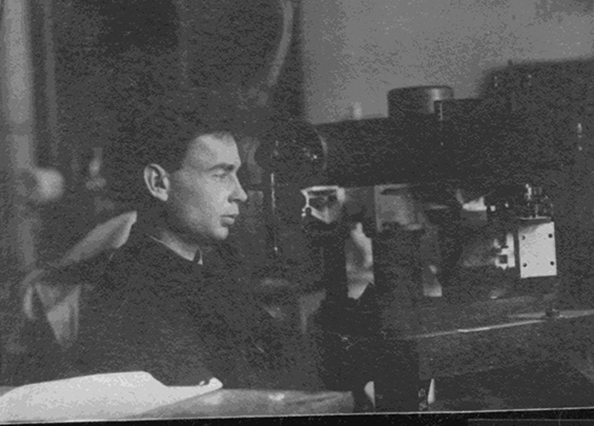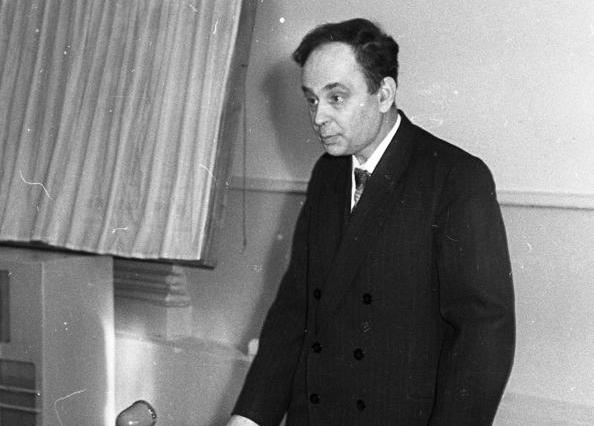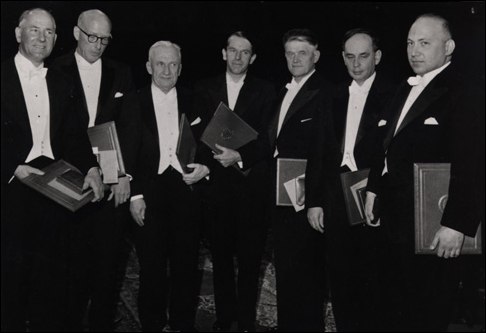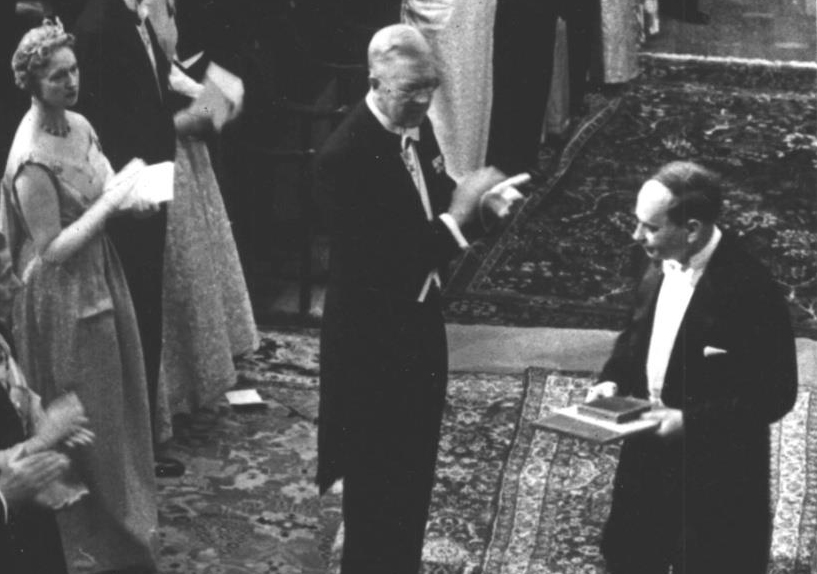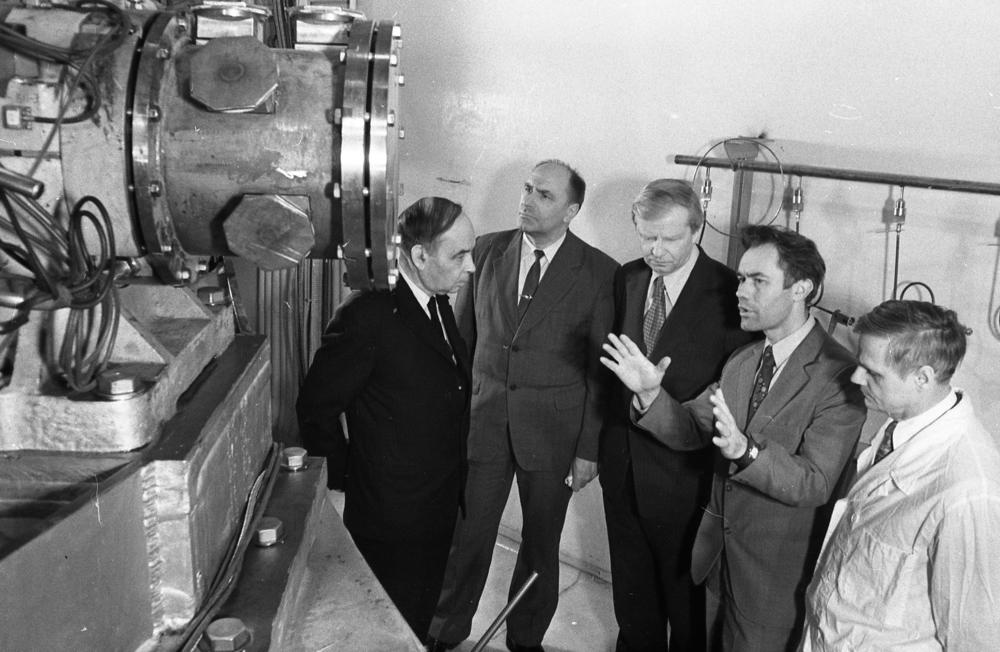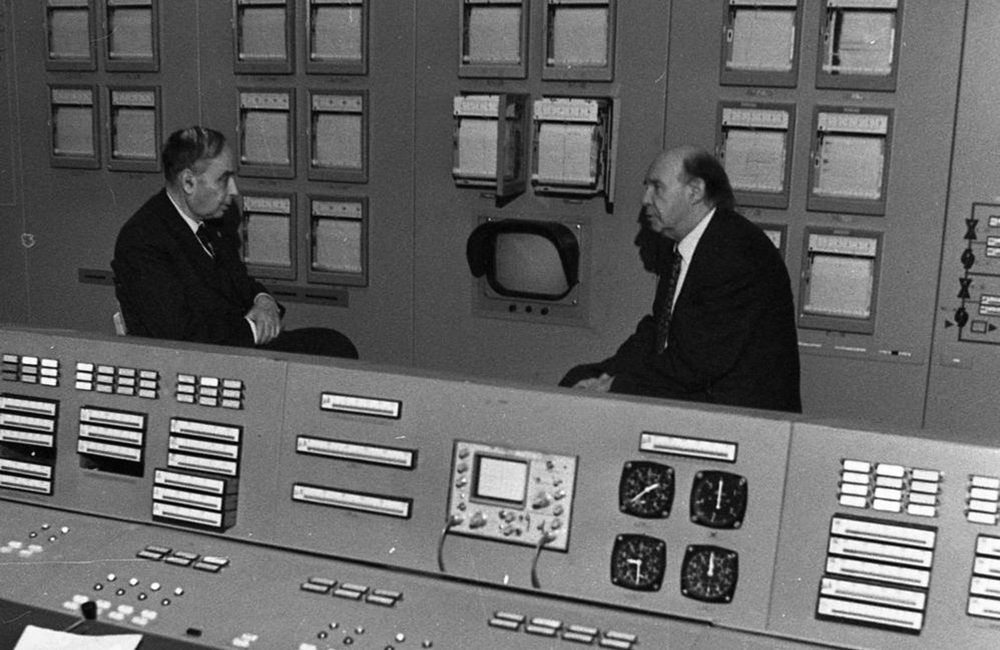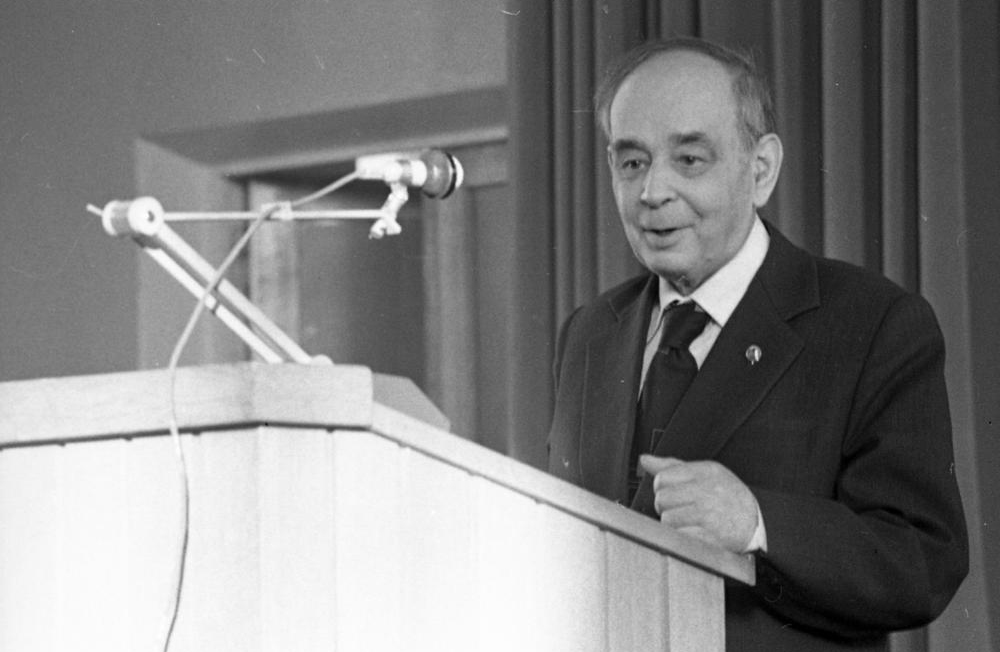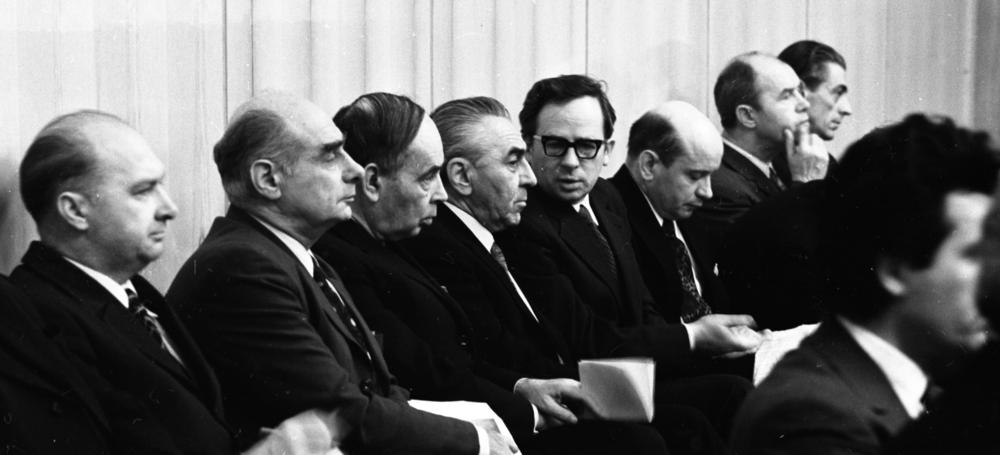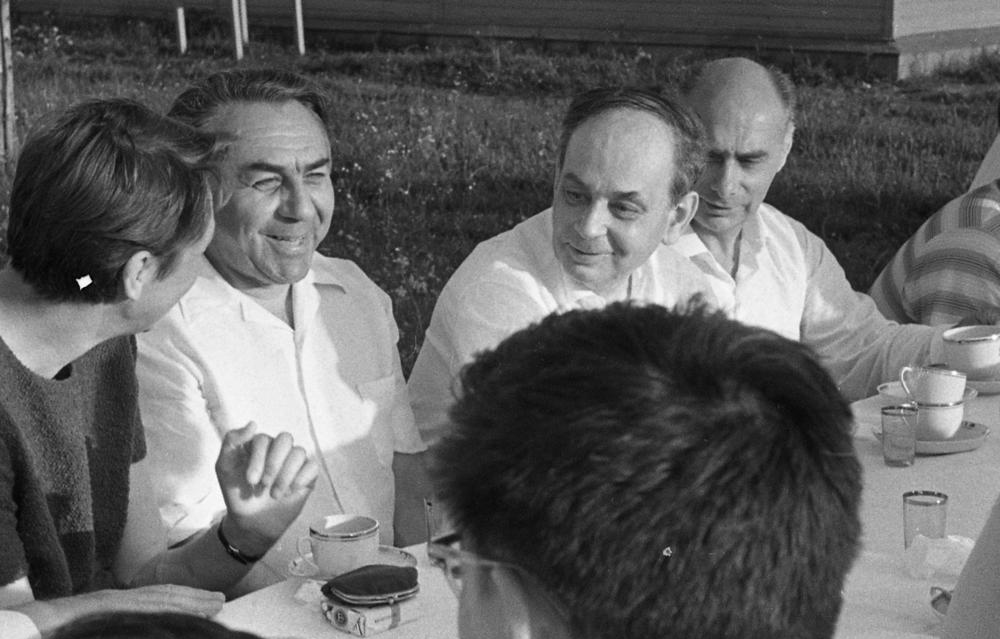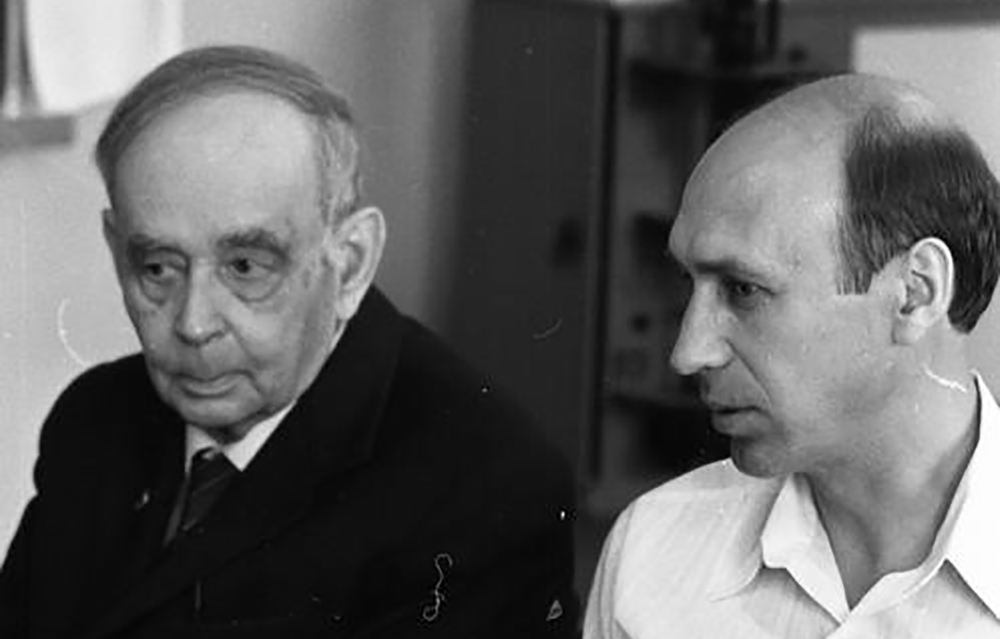Remembering founders: Ilya Frank
News, 23 October 2022
23 October is a memorable date in the history of the Joint Institute for Nuclear Research. On this day, an outstanding scientist Academician Ilya Mikhailovich Frank (1908 – 1990), a laureate of the Nobel Prize, an organizer and longstanding Head of the Laboratory of Neutron Physics was born.
Ilya Mikhailovich was born in Saint Petersburg. After his graduation from the Faculty of Physics and Mathematics of Moscow State University in 1930, Frank started his scientific career at the State Optics Institute (Leningrad).
In the early 30s, Ilya Frank in cooperation with physicists Vladimir Veksler and Pavel Cherenkov took part in expeditions to Elbrus aimed at studying cosmic rays.
In 1934, Frank changed his working place to the Lebedev Physical Institute, at which under the guidance of Academician Sergey Vavilov he took part in Cherenkov’s experiments on the luminescence of liquids irradiated with radium gamma rays. In 1937, Igor Tamm and Ilya Frank provided a theoretical explanation of the observed phenomenon, which was called the Vavilov-Cherenkov effect.
Nowadays, this phenomenon is widely used in fundamental science and medicine. Specialists are creating so-called Cherenkov counters. The Super-Kamiokande Neutrino Detector located in Japan is the largest counter of such a type in the world. Specialists have developed cherenkoscopy, a new method with the potential to improve precision of tumour irradiation.
In 1958, I. M. Frank together with Pavel Cherenkov and Igor Tamm received the Nobel Prize in Physics for the interpretation of the Vavilov-Cherenkov luminescence effect.
Frank’s specialisation was initially optical physics. However, in 1933, his teacher Sergey Vavilov offered the employee, capable of profound scientific analysis, nuclear physics as his new research area. Frank was one of Vavilov’s beloved students, who characterised Ilya Mikhailovich as a great, versatile experimental physicist with outstanding theoretical erudition.
He was a participant of the atomic project. In 1953, I. M. Frank received the Stalin Prize of the second degree for nuclear physics research on the development and testing of RDS-6S (the first Soviet hydrogen bomb).
Since 1946, he headed the Radiaton Monitoring Laboratory of the Skobeltsyn Institute of Nuclear Physics of the Moscow State University (SINP MSU), at which he was a Professor. Moreover, he founded and headed the Laboratory of Atomic Nucleus at LPI RAS for many years. At the Laboratory, together with colleagues, he worked on the creation of the uranium-graphite reactor F-1 (1946), first in the USSR and Europe. Research on reactor physics was conducted in close cooperation with Igor Kurchatov. Frank later recalled that his specialisation in neutron physics started with research on reactor physics. Precision measurements of parameters of uranium-graphite lattices were performed, a new pulsed method for studying thermal neutron diffusion was suggested, the phenomenon of diffusion cooling was discovered, reactions on light nuclei with neutron emission, as well as the interaction of fast neutrons with nuclei and fission processes were investigated. I. M. Frank initiated research on studies of fission processes induced by mesons and high-energy particles.
In addition, in 1946, I. M. Frank in collaboration with another future laureate of the Nobel Prize Vitaly Ginzburg participated in fundamental studies of electrodynamics of moving sources in refracting media. They predicted the effect of transitional radiation experimentally discovered 12 years later.
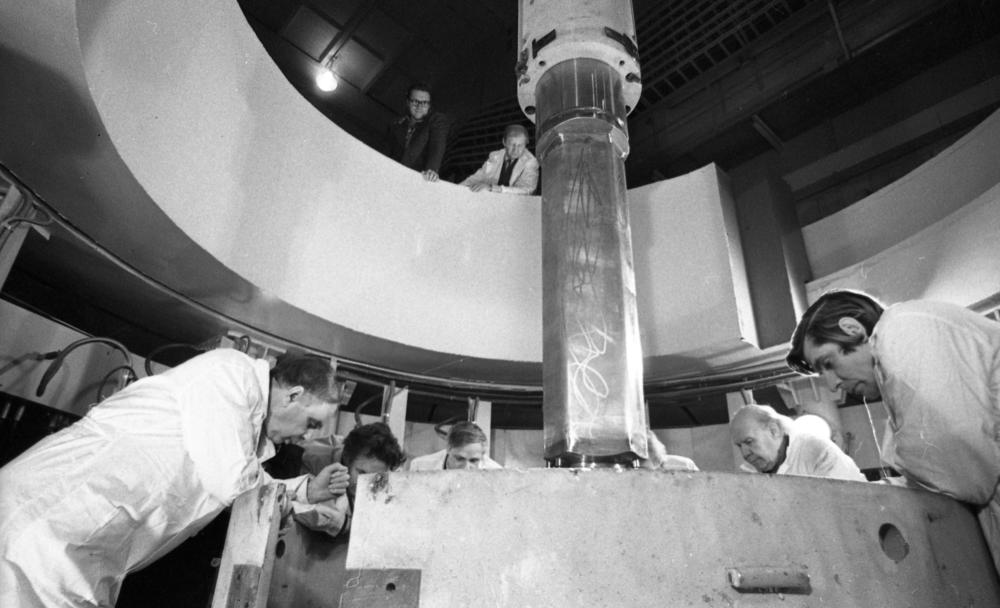 Installation of the IBR-2 reactor vessel
Installation of the IBR-2 reactor vessel
In 1957, first JINR Director Dmitry Blokhintsev invited his MSU course mate Ilya Frank to Dubna to organize and direct the fourth Laboratory of the Joint Institute – the Laboratory of Neutron Physics. Frank directed LNP until 1988. Afterwards, he was its Honorary Director. Having practical experience in the reactor construction, Frank became one of the heads of the construction of such pulsed reactors as IBR, IBR-30 with an injector, and IBR-2. It allowed scientists of the Laboratory of Neutron Physics developed by him to obtain a number of new results in research of nuclear and condensed matter physics.
Ilya Frank’s scientific style was characterised by unbiased thoughts, deep physical analysing skill, understanding of nuances of the experiment, perseverance in achieving goals, and the ability to identify main defining features of the phenomenon.
Ilya Mikhailovich was the founder of several schools on neutron physics, a laureate of three State Prizes, and a participant of the Pugwash Movement of Scientists for Peace. In Dubna, the Laboratory of Neutron Physics and a street were named after him. Moreover, a street in Troitsk and an aircraft of the Aeroflot company bear the name of this great scientist. A commemorative stamp of the Russian Post and a commemorative coin of the Bank of Russia were issued in his honour. At FLNP JINR, I. M. Frank Scholarships are awarded.
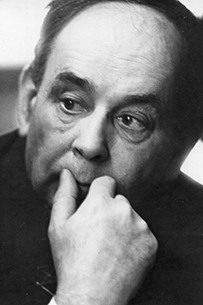 The role of Ilya Mikhailovich in the creation of traditions of the scientific team of the Laboratory of Neutron Physics should be particularly noted. Victor Aksenov, who held the post of the FLNP Director after Ilya Frank, highlighted, “The most important thing in Ilya Mikhailovich’s leadership was a high ethical culture, his respectful, polite attitude towards employees. He was equal with everyone without distinction in ranks and degrees.” Traditions and spirit established by the founder of the Laboratory and his Deputy Fyodor Shapiro have been already preserved for 65 years. Next week, FLNP as one of the leading scientific centres for neutron research in the world, will celebrate its anniversary.
The role of Ilya Mikhailovich in the creation of traditions of the scientific team of the Laboratory of Neutron Physics should be particularly noted. Victor Aksenov, who held the post of the FLNP Director after Ilya Frank, highlighted, “The most important thing in Ilya Mikhailovich’s leadership was a high ethical culture, his respectful, polite attitude towards employees. He was equal with everyone without distinction in ranks and degrees.” Traditions and spirit established by the founder of the Laboratory and his Deputy Fyodor Shapiro have been already preserved for 65 years. Next week, FLNP as one of the leading scientific centres for neutron research in the world, will celebrate its anniversary.

